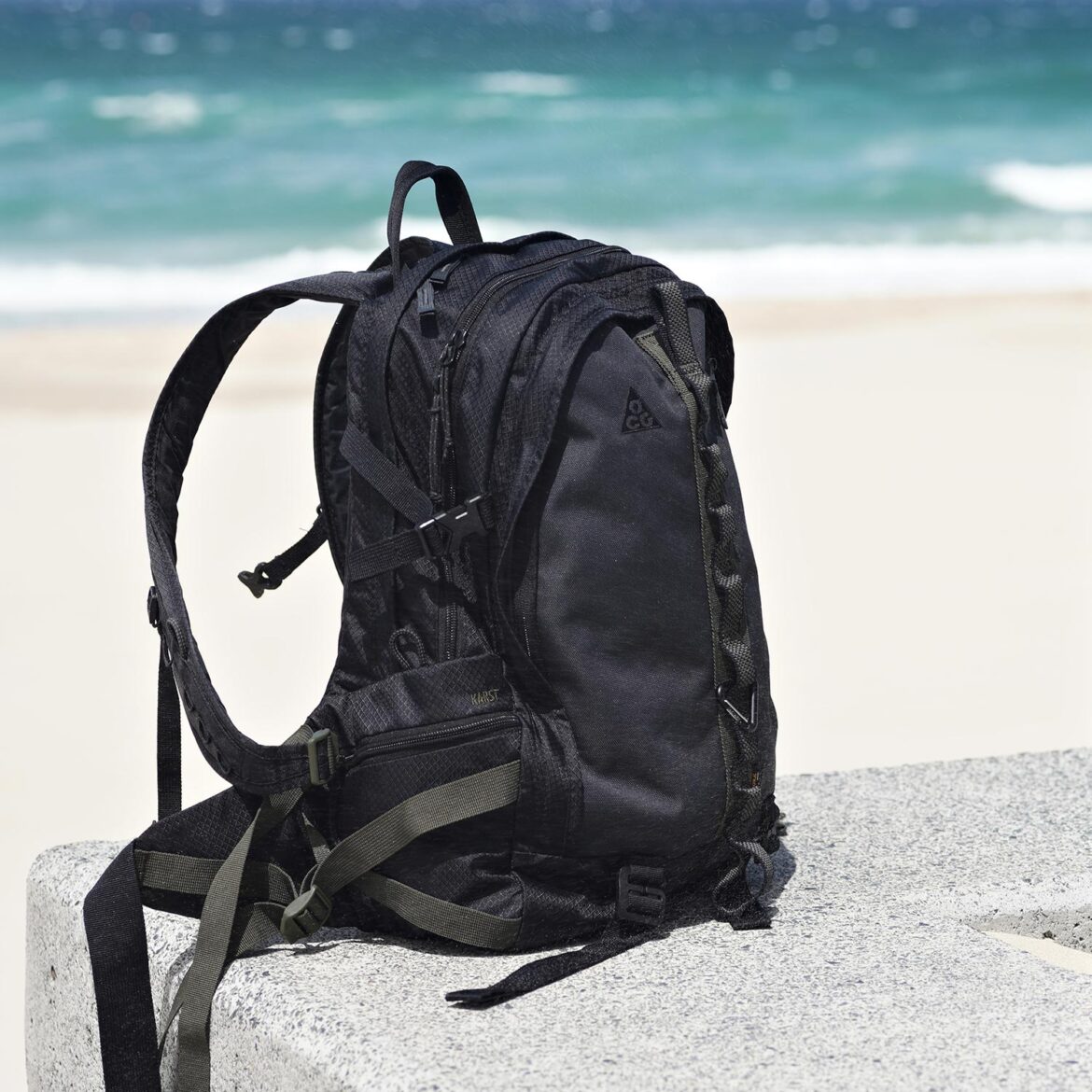Written by: XEONIQ [Instagram | Tumblr]
Contents
- Introduction
- Performance Specifications
- Design Features
- Issues and Concerns
- Use Case and Styling
- Summary
1. Introduction
The current release of the Karst Backpack is an update of the venerable design, which has been offered under both Nike’s mainline and ACG (All Conditions Gear) brands over the last couple of decades. As an owner of the 2010 ACG Karst, I was intrigued to test out this new iteration. Alongside the ACG Steel City and the NSW Eugene Cheyenne 2000, the ACG Karst was a novel urban streetwear backpack. This current release promises a outdoors-focused design with more features and an expanded use case. I’ve personally felt that there has been a sharp drop off in the quality and performance of Nike products over the past few years and was happy to see a shift back towards their product lineup ten years ago.
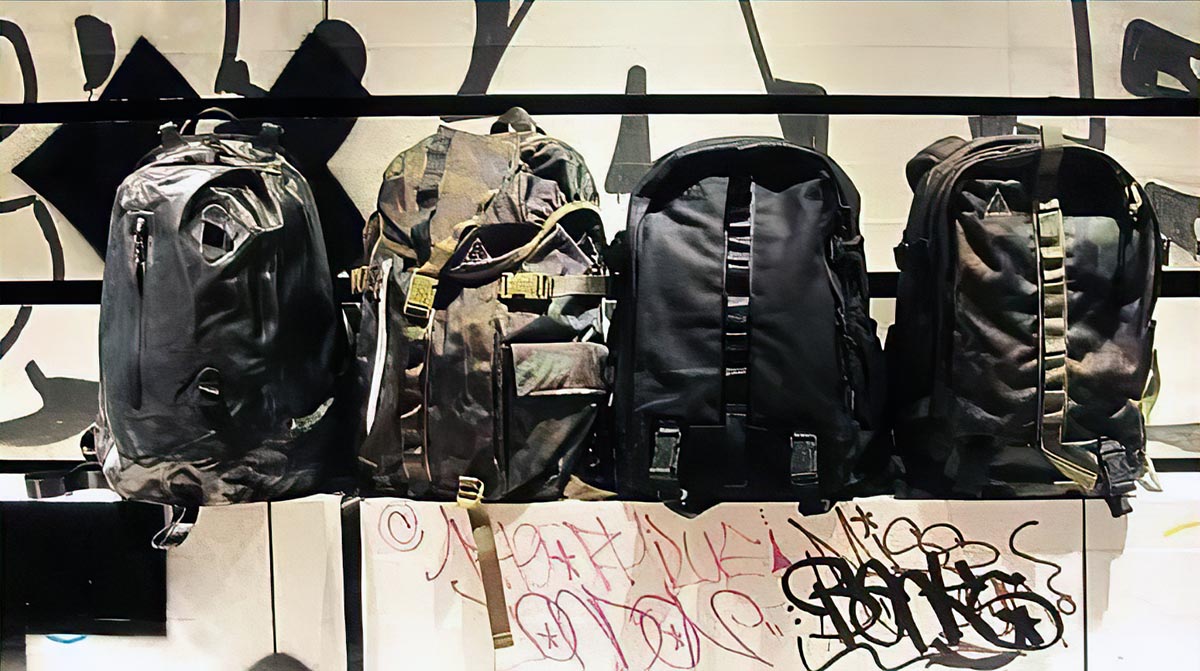
I’ve been exclusively wearing this backpack for the past few weeks to determine whether it lives up to it’s sub-brand’s namesake. The Karst’s RRP is $135 AUD and the bag was purchased from Laced in Brisbane, Australia.
2. Performance Specifications
Nike claims: “This product was designed and tested in Oregon, USA. The state’s vast wilderness and climate served as inspiration for the backpack’s look and purpose.” Feature Highlights of the Nike ACG Karst Backpack:
- 29 Litre total storage capacity
- Polyester 63% | Nylon 37% body texile with diamond pattern
- Cordura Nylon front panel with concealed centre zip access pocket and vertical “daisy chain” webbing loops
- Metal ACG-branded Carabiner
- Single-fold top grab handle with bound seam
- Modular cord-loop system on padded shoulder straps for buckled chest/sternum strap
- Buckled, size-adjustable waist strap
- Skateboard harness in buckle-adjustable nylon webbing, with hook anchor
- Buckled strap adjustment to reduce load on main zipper
- 3 x Main Compartments
- Front: the smallest, with zipper placket, nylon webbing zipper pulls and interior Hook and Loop-secured pocket
- Middle: the largest, with no placket, Paracord-wrapped zipper pulls and zippered internal storage pocket
- Rear: large 16″+ laptop compartment with zipper placket, nylon webbing zipper pulls and internal snap-closure twin drop pockets
- 2 x side-located zippered, accessible-while-worn pockets
- Padded back cushioning
3. Design Features
There are two stand out design features that I feel need highlighted as they are not immediately apparent when viewing images and reading feature sets of this backpack. These two qualities, in my mind, should be major selling points when considering purchasing this backpack.
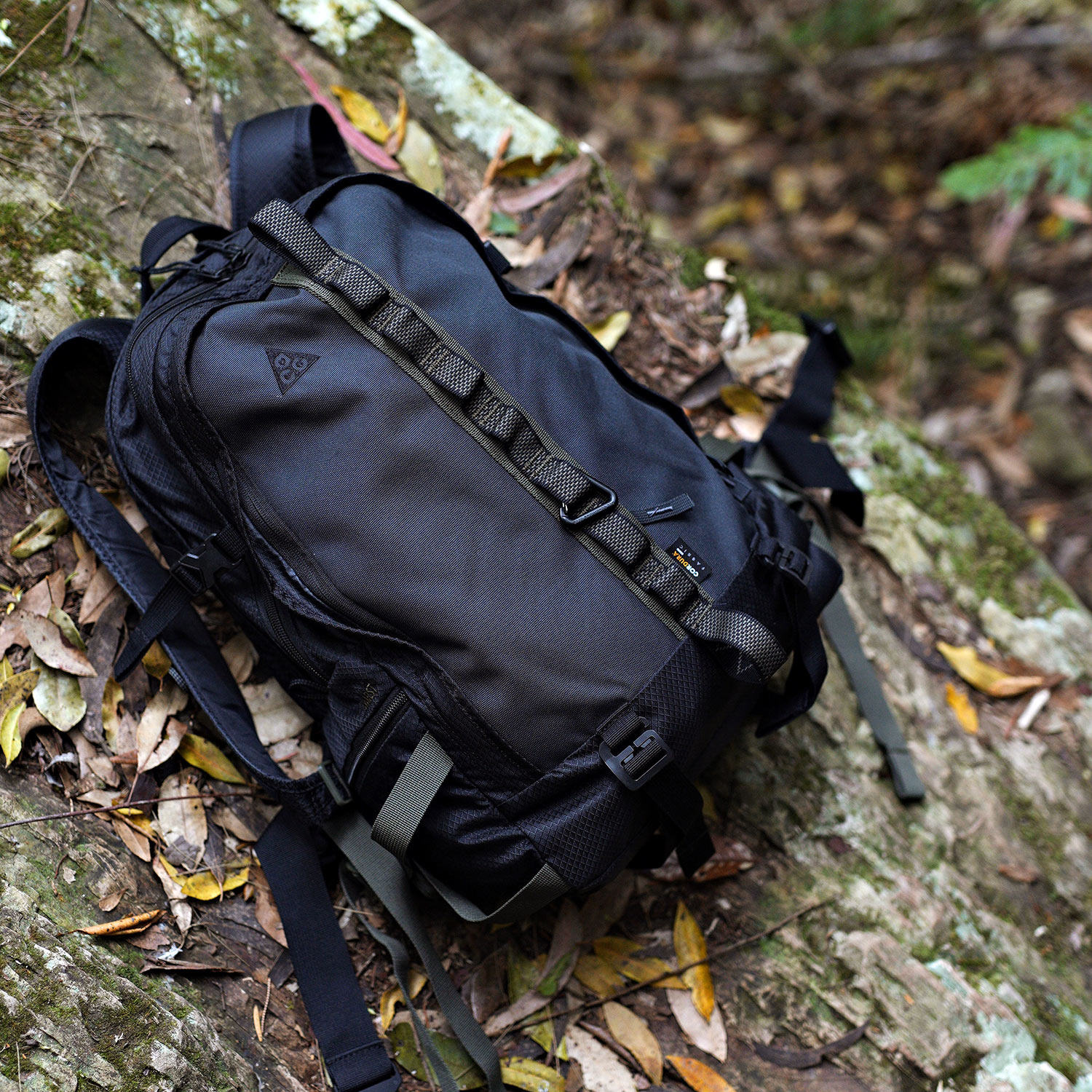
Firstly, the construction and design of the padding located on the back and used on the shoulder straps is extremely soft and thick. Of the many backpacks I’ve used and tested over the years, this is by far the most comfortable implementation I’ve encountered. With an ample 29L storage capacity (for a daily backpack) this padding makes carrying heavier loads very comfortable when compared to other brands’ bags. I have used my Karst backpack with a total weight including the bag of 12.5KG +/- 2.5KG and have been thoroughly impressed with the comfort afforded by its copious use of padding. Now this does have the downside of also providing ample insulation, which will be discussed in Section 4 below; but purely in the context of comfort this backpack is extremely competitive.
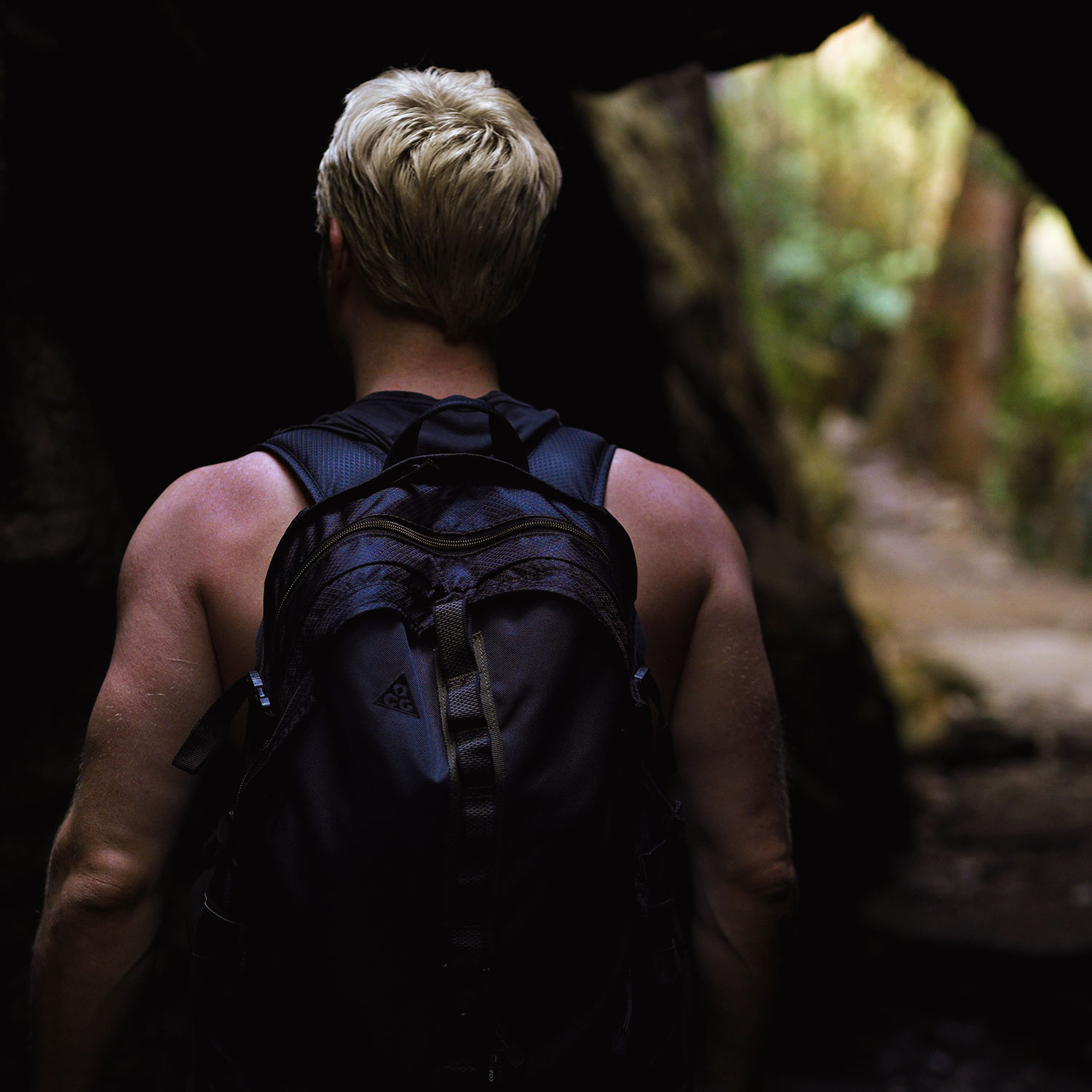
Secondly, the zippers used on the Karst backpack are a real pleasure to use. They are not branded with any maker’s mark; however the action on them is incredibly smooth and precise. This may seem to be a minor benefit, but stiff zippers that easily snag or that have too much resistance in their pull can be frustrating over time. You will be opening and closing your backpack via its zippers many times over the day, far more than you will be requiring more overt performance benefits. Nike has made an excellent hardware choice here for the ACG Karst.

Aside from those two features, there are a number of relative and subjective changes to the ACG Karst that I think are worth mentioning. The designers have done a great job in mixing colours and textures with mixed materials to create a maximal, but very coordinated, aesthetic.
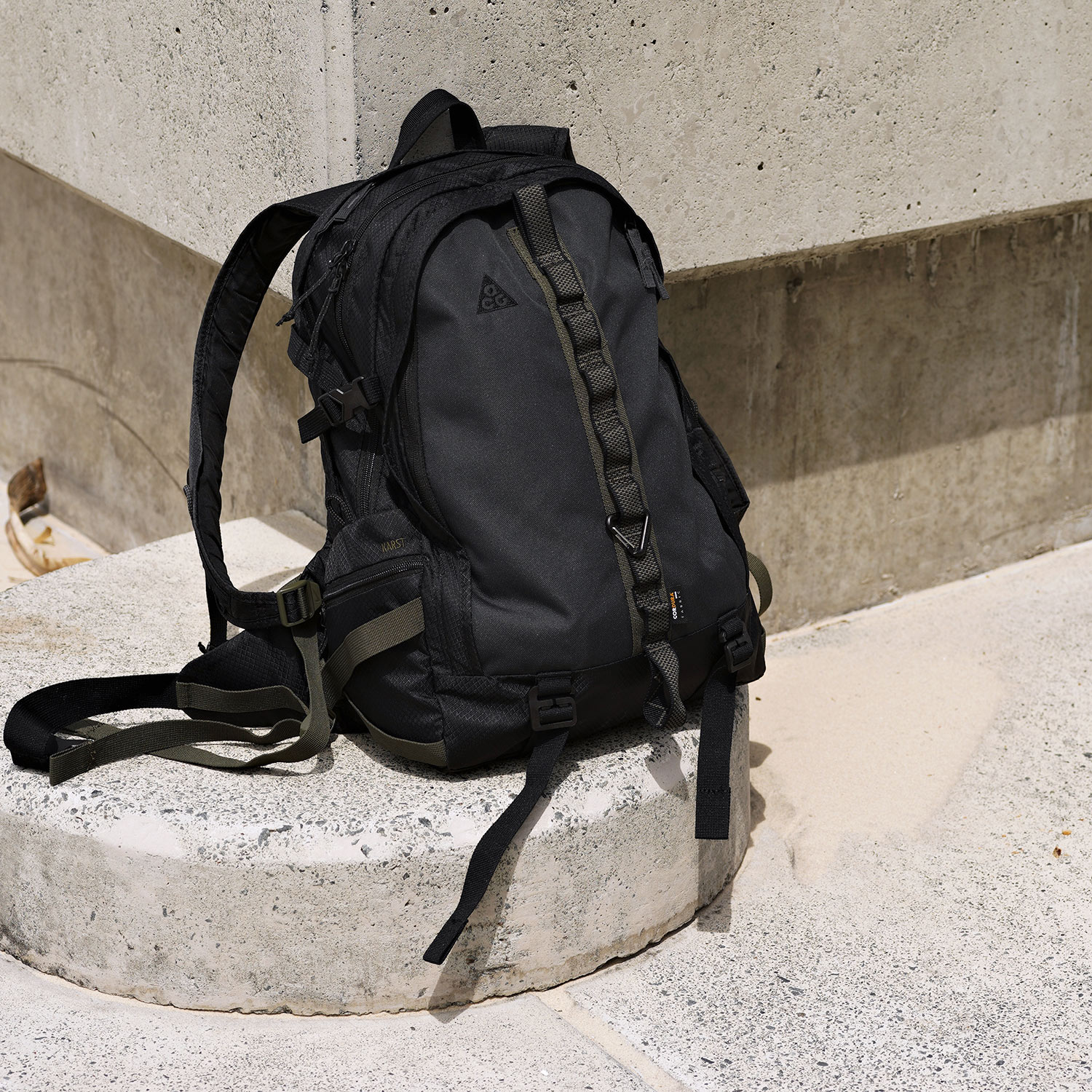
Compared to the original ACG Karst, the sternum and waist straps are a welcome addition, providing increased stability and support, especially for cycling. Numerous adjustable webbing straps and a variety of pull cords make this iteration considerably more eye-catching and do provide some measure of increased practical performance. The internal storage pockets have been reduced in number compared to the original Karst but each compartment still retains one or two good-sized, practical pouches for smaller items. The plastic hardware and pull cords used throughout the bag all are a step up from your typical Nike offering in quality and all have a technical aesthetic; it’s nice to see these small details being taken into consideration.

Another important design advantage of the ACG Karst is that it can fit a large laptop. Many daily commuter bags are quite limited in this regard such as the Veilance Nomin or Arc’teryx Granville 16. If you regularly carry a large machine the ACG Karst will comfortably fit a 16″ laptop and most likely quite a bit bigger.
Finally, many higher end commuter backpacks tend to suffer from silhouette issues, in either an effort to maximise internal space or from design or construction constraints that result in a “brick” shape. I personally feel this sticks out awkwardly when worn, appearing like a suit case on one’s back. The ACG Karst has a more organic silhouette that is aesthetically balanced while being worn.
4. Issues and Concerns
There were a number of issues and concerns identified with the bag in several weeks of continuous daily testing. Frequent comparison with the Condor Failsafe Elite (Review) will be made as these two bags are similarly priced competitors in the daily urban backpack market and I have considerable experience with the Condor.
4.1 Sternum Strap Design and Construction Problems
I was happy to see the addition of the sternum strap on the ACG Karst, as the original model lacked both it and the waist belt. Unfortunately there are two glaring issues with the sternum strap design. The first is that the way the vertical adjustability of the strap has been implemented is by pulling the ends of each side strap through elastic cord loops that are lined up and down the shoulder straps. The issue is that these elastic cord loops are extremely weak. In a few weeks the straps have already damaged and pulled loose these elastic cords on both sides of shoulder strap.
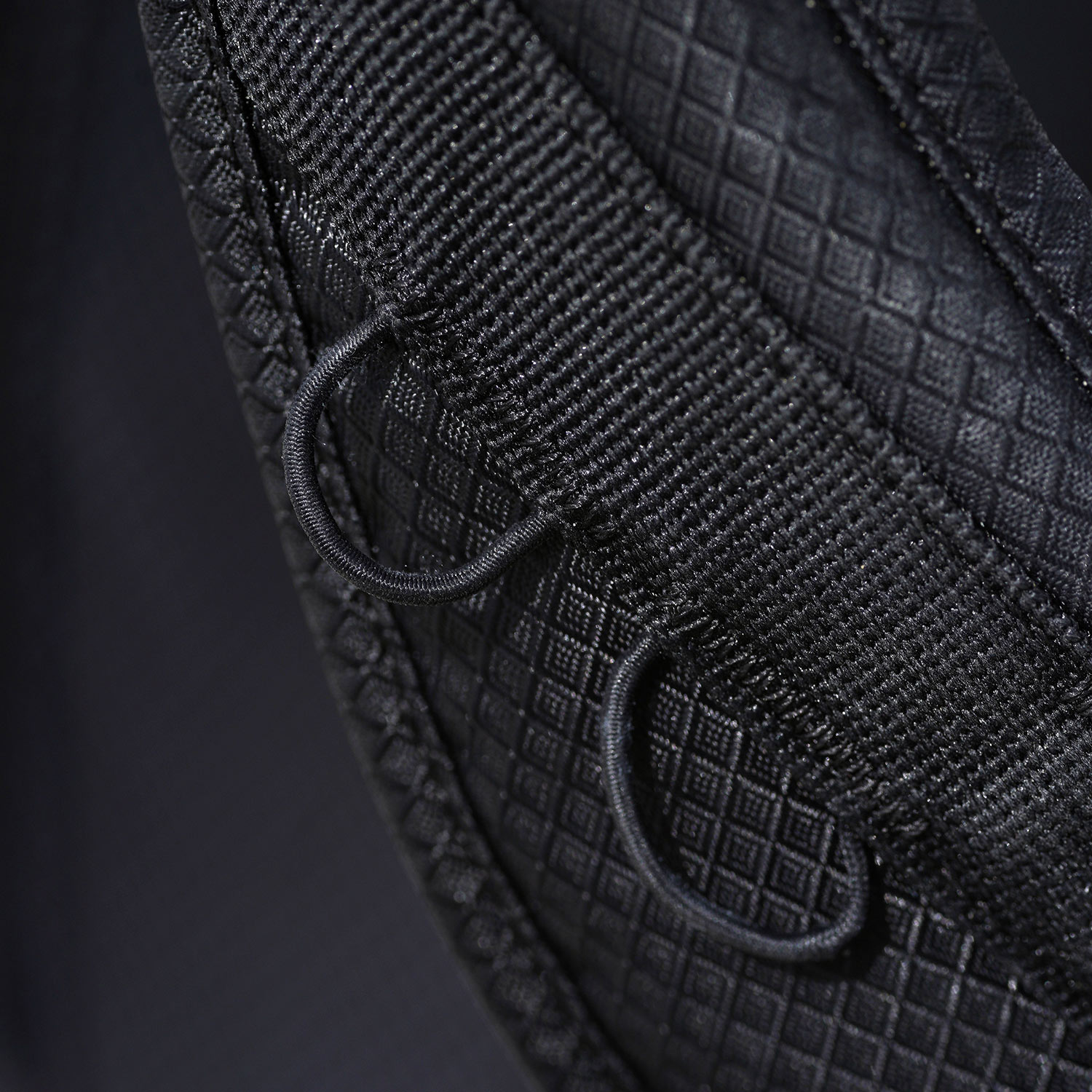
The second issue is that the design itself means that the straps can easily fall out of the loops when not secured under load. Put these two issues together and you have loops that will be stretched too wide from being under load all day, and straps that can and will fall out constantly. Somehow I have not lost either side of the strap yet but I anticipate I will eventually. Aftermarket sternum straps will most likely be needed for any long term users of this backpack.
4.2 Back and Shoulder Padding works as a Heavy Insulator
One of the standouts of the ACG Karst design is its wonderful thick back and shoulder padding. However, this comes at a cost. With the bag pressed close to your back, it acts as a strong insulator as if you are wearing a polyester-filled puffer vest on your back. During the winter months this won’t be an issue but in summer, especially if you live in a warm climate like I do, it means you will sweat and be very uncomfortable outside in this bag. The Condor Failsafe Elite (Review) in comparison has two firm pads that allow a gap and airflow between the bag and the wearer’s back, preventing this issue.
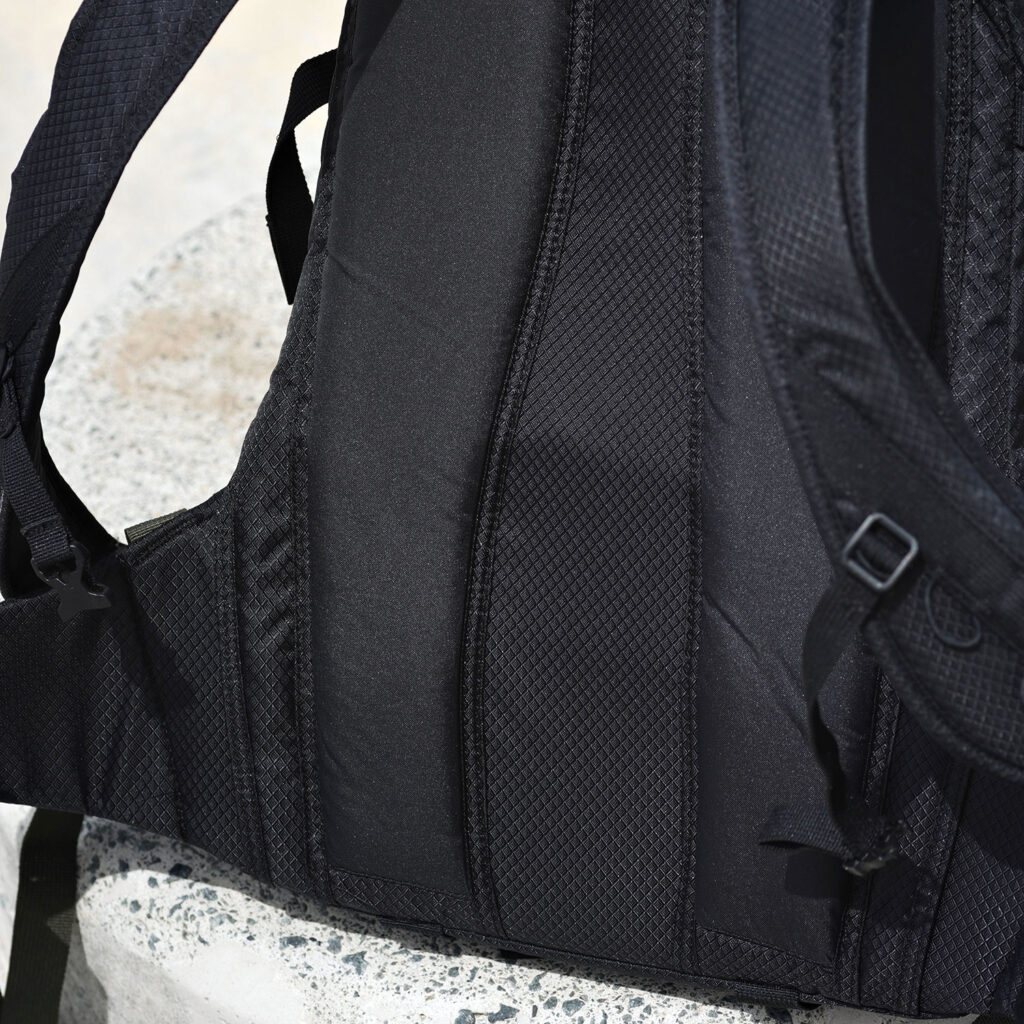
4.3 Skateboard Harness Straps Unhook Regularly while Wearing
This is not a major issue for me, but it is annoying. No matter how tight you pull the webbing straps at the bottom, the hardware hooks used will slip out of their loops. I imagine if you had a skateboard stowed with these straps as they are intended, your board would be falling out regularly. The shape of the hook is just not appropriate for it’s implemented use and whether kept loose or tight, they will continually fall out.
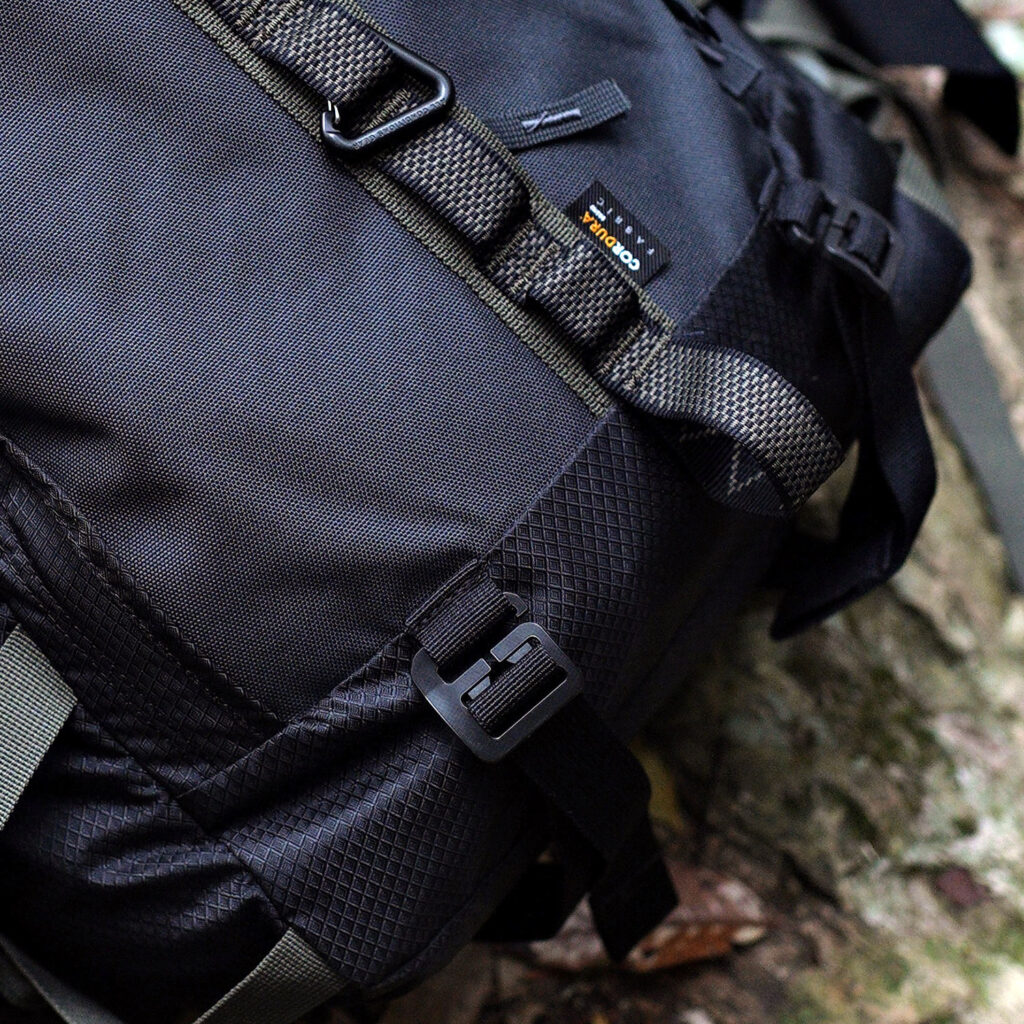
4.4 Not Water-Resistant; Not Usable in the Rain even with a Rain Cover
I purchased this backpack knowing full well that with exposed non-waterproof zippers, and with only one front panel being Cordura nylon (which is water-resistant), that the ACG Karst would not be a waterproof bag. I purchased a AGPTEK 2-Layer Rain Cover (18L-25L size) for $15 for two covers, and stowed it in the side compartment of the Karst, awaiting a rain storm to properly test the bag out. Luckily, in the past week the Gold Coast has been inundated with tropical storms.

The results were not good. While the rain cover completely blocked the rain, the exposed straps quickly soaked through. Then, as water hit my Gore-Tex shell on my head and shoulders, it ran down between the jacket and the bag, soaking through the padding which was tightly pressed against my back. After an hour in the rain, when I had arrived at my destination and inspected the bag, all three main compartments had water on the bottom. Luckily, I have my electronics in their own sealed pouches, however this is not acceptable for a bag marketed as being tested and designed for the wilderness under the label “All Conditions Gear”. The similarly priced Condor Fail Safe Elite (Review) has its own in-built rain cover and its robust back padding system creates a gap between the wearer’s back and the main bag; and in two years I’ve never had leak through in severe storms.
4.5 No Padding on the Bottom of the Bag
As backpacks are set down or even tossed down on the ground mostly landing bottom first, it is important to have some sort of padding to absorb these shocks to protect your electronics and valuables. With the copious padding on the back of the Karst and a dedicated laptop compartment, it would be expected that there would be ample protection on the bottom. Unfortunately, this is not the case. There are only two extremely thin layers of polyester material at the bottom of the bag so you will need to be very gentle resting it down each time.
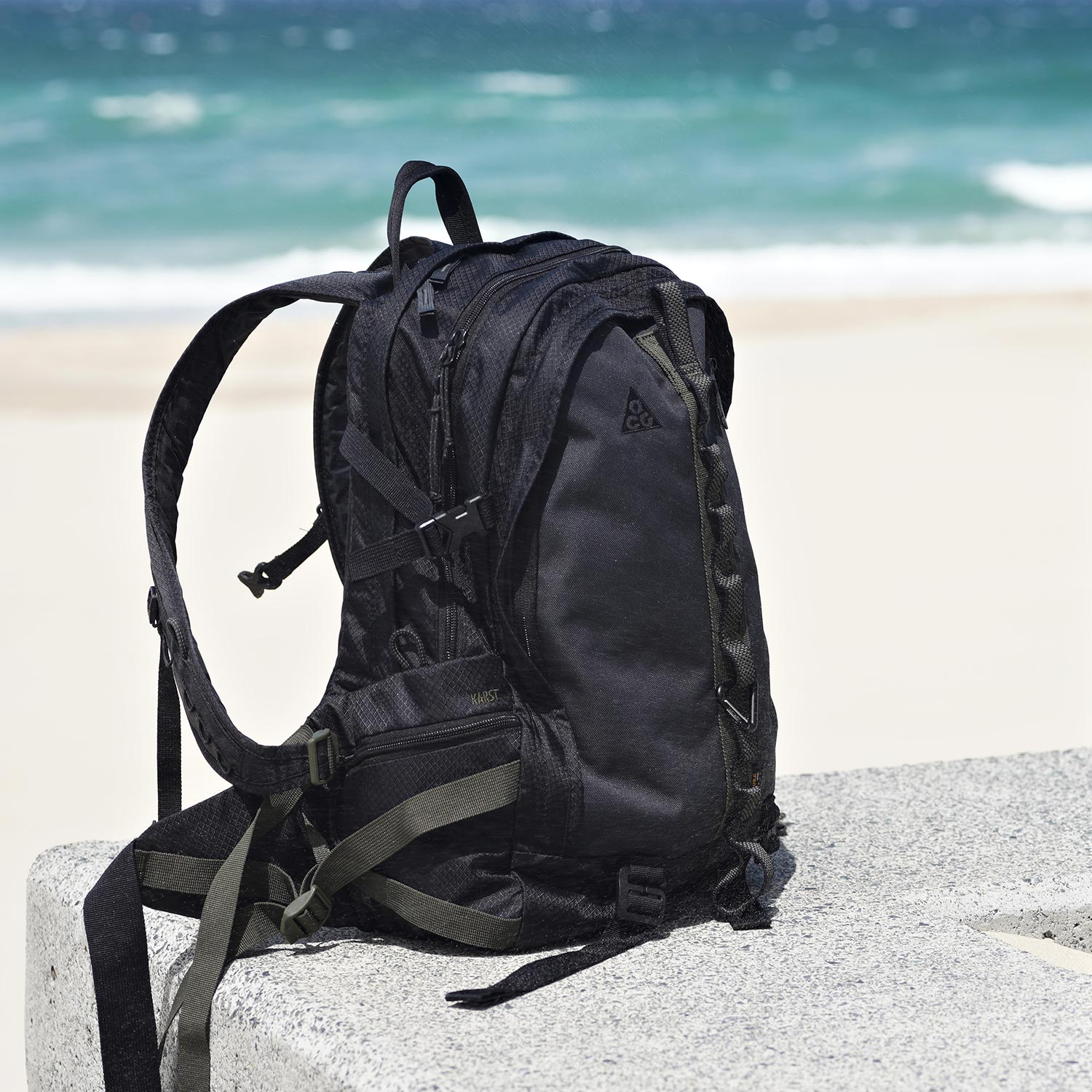
4.6 Stains, Loose Threads and Longevity Concerns
Within a few days stitches on parts of the bag, especially the nylon pull tabs were coming undone. Over a few weeks being worn in the rainforest, the beach, numerous urban environments, the dark charcoal Cordura front panel has taken on a lot of stains which have not been removable with spot cleaning thus far. The inner polyester of the shoulder straps are taking heavy wear already. For some reason, a insulating soft fleece material has been used to line the two side pockets, and these already are pilling; and I’m unsure why you would need insulation on the inside of these small compartments regardless.
In comparison, the Condor Failsafe Elite (Review), which is completely Cordura, and which I’ve now worn over two years, still presents very well with minimal evident wear. I do not anticipate the Nike ACG Karst being able to last anywhere near as long and to have a very heavily degraded aesthetic quickly.
5. Use Case and Styling
I have put this backpack through the paces commuting through urban spaces on foot and while cycling, trekking across sand dunes, hiking in the Springbrook rain forest, and exposing the bag to over and hour in a tropical storm.

The backpack was always loaded relatively to its capacity with my typical carry of camera equipment and a 15.6″ laptop and its accessories. And while water soaked through the ACG Karst even with a rain cover, and sand easily penetrated through it on a windy day; it was a very comfortable backpack for cycling and foot commuting in urban spaces during mild weather.
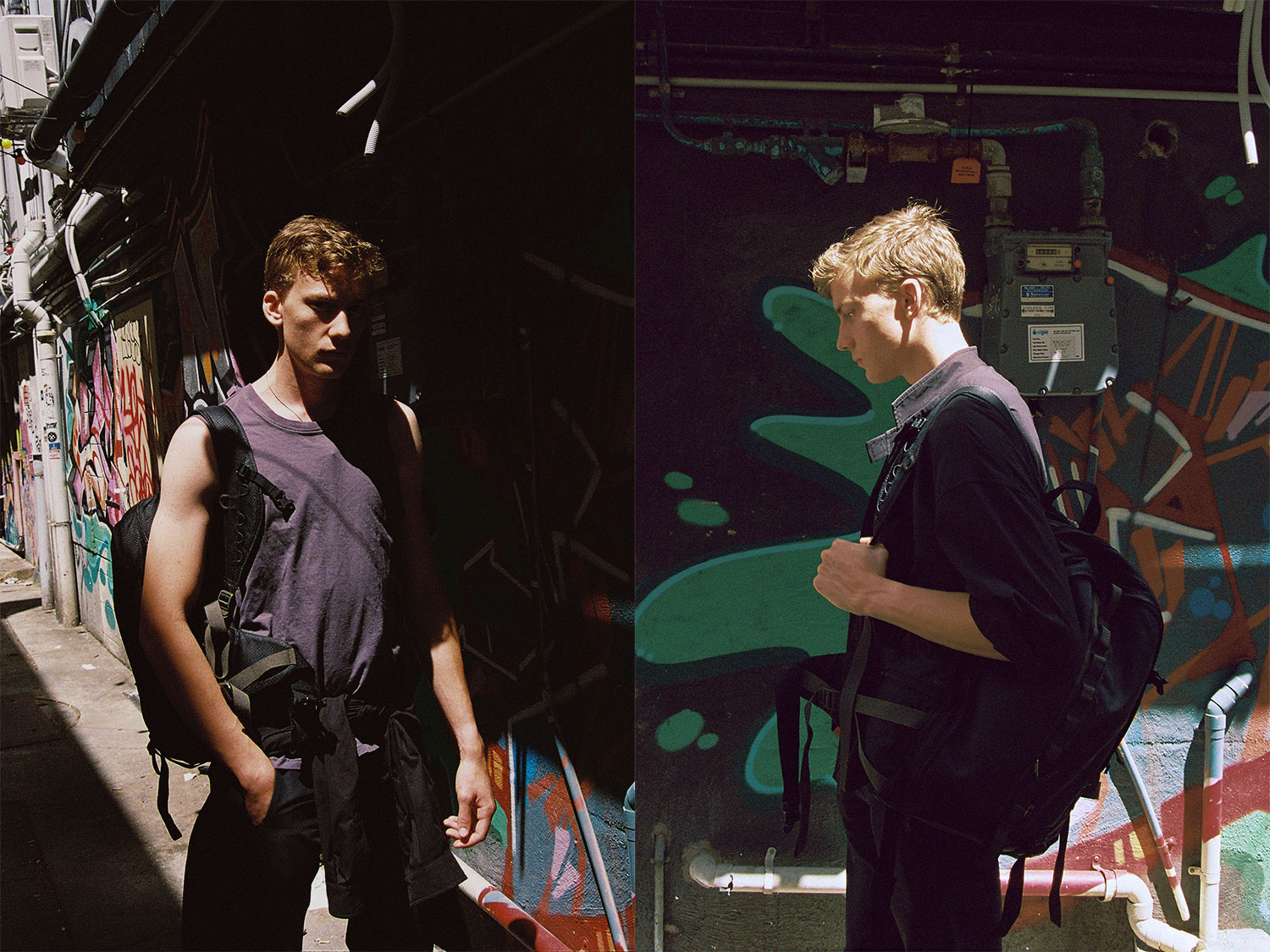
With my review now done, this backpack will be off full-time duty and be relegated to casual use when I feel it’s aesthetic is suitable or when I would value it’s comfortable padding during cooler months. However, this won’t be my summer bag, a bag I’d wear when it could rain on the day, or for traveling.
6. Summary
6.1 Pros
- Great volume and large size for a daily urban backpack, holds a large 16″+ laptop
- Extremely smooth and satisfying action on the zippers that are a pleasure to use
- One of the most comfortable backpacks I’ve ever worn thanks to it’s copious back and strap padding
6.2 Cons
- Not water-resistant nor safe to use in heavy rain, even with a rain cover, due to design flaws
- Insufficient padding on the bottom of the bag to cushion valuables from impacts
- Numerous quality issues affecting aesthetic and practical durability and longevity as an “all conditions” bag; for urban casual use only
6.3 Verdict
Despite the numerous issues I’ve encountered with this bag, it is definitely a step in the right direction for Nike. While for my personal style this bag might be aesthetically very busy, the mixed materials, copious straps and tasteful use of muted grey-green-black colour blocking is currently on trend. If you like the look of this bag, commute on public transport or by car and don’t need to worry about heavy rain storms, this bag is extremely comfortable and holds more than you’d expect. If you are looking for a harder-wearing, more practical and fuller-featured (albeit smaller) backpack in a more conservative all black, definitely check out the Condor Failsafe Elite for $98USD/$168AUD.
Ethical Statement: This product was purchased by myself with my own funds and is in no way endorsed or otherwise sponsored by the manufacturer (Nike) or the retailer (Laced).
If you enjoyed this article, supporting SHELLZINE by any amount can be made via the link below. Your contribution is completely optional and all funds help cover the website’s growing hosting costs and enable further original content creation without the use of advertisements. Secure payments by all major card types, including Google Pay and Apple Pay, are supported.

